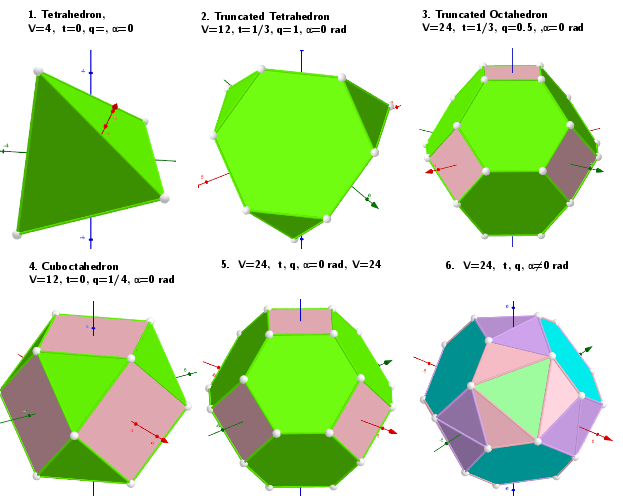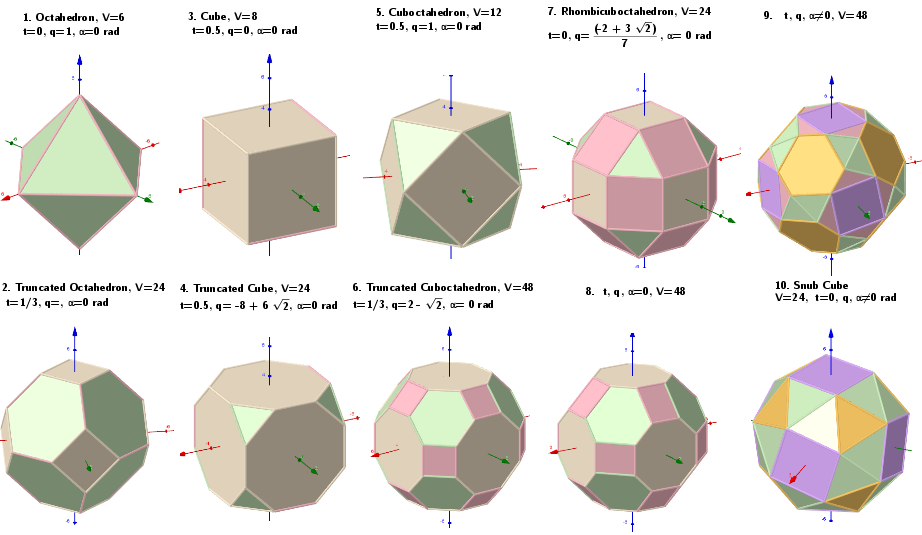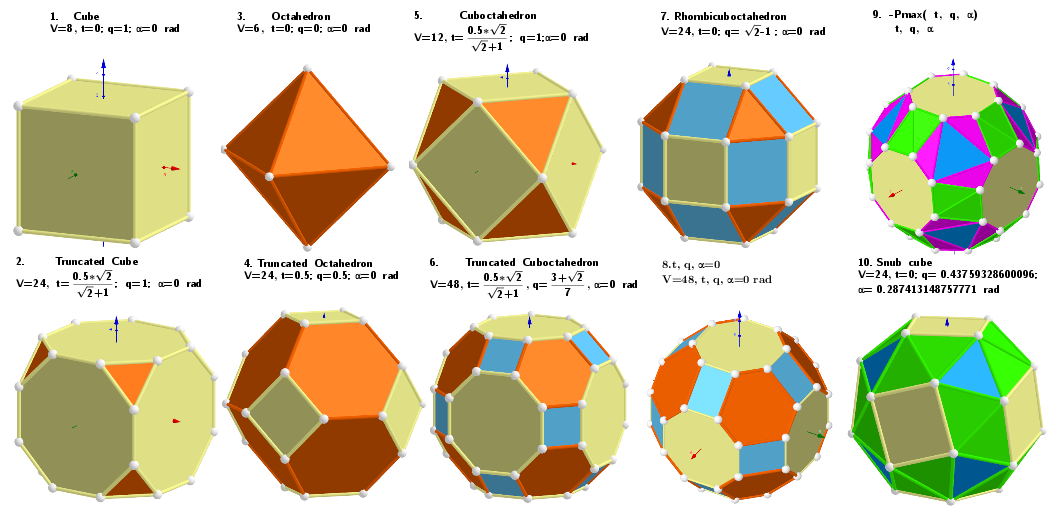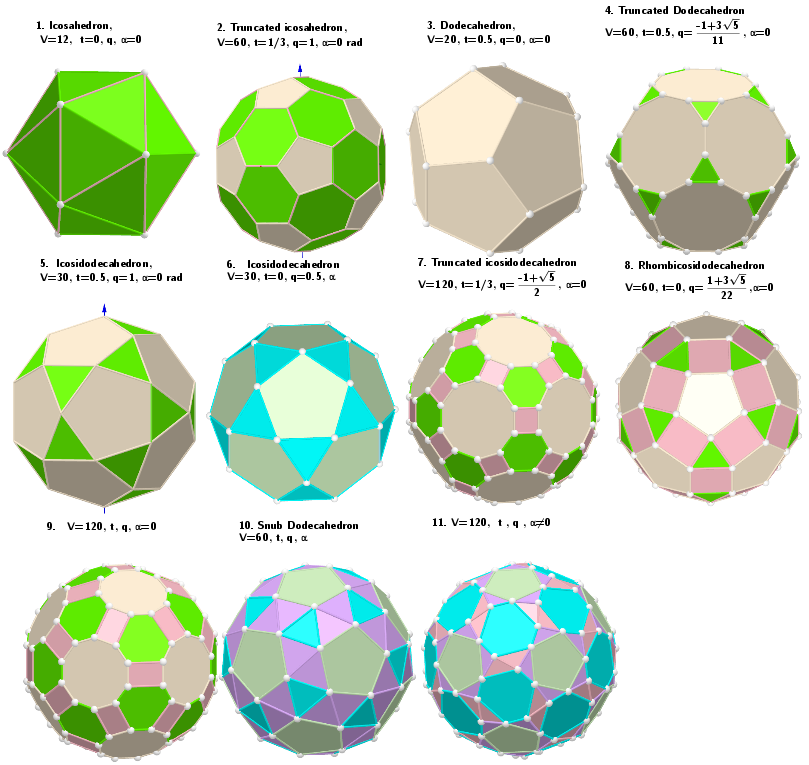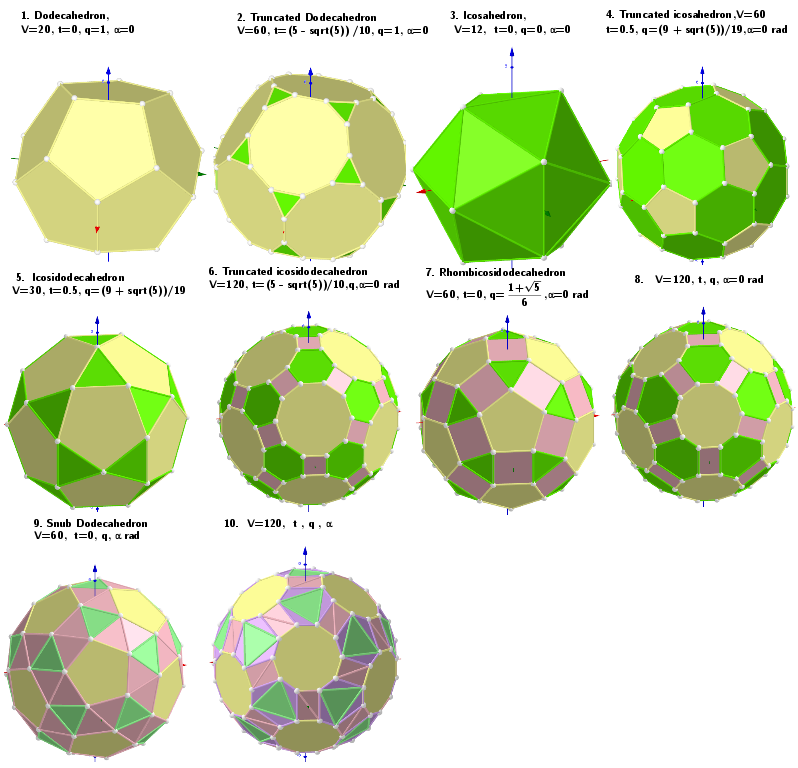Three-parameter model transformations of the Platonic Solids faces
Three parameters are used to transform Platonic Solids faces:
t - for truncating,
q-similarity transformations,
α-angle rotation of faces.
With these parameters, using the well-known Expansion and Snub operations applied to a polyhedron, you can explore various polyhedra and get a number of Archimedean Solids.
Table of the Archimedean Solids obtained in three-parameter models of transformations of the Platonic Solids faces:
Platonic Solids models → Tetrahedron Octahedron Cube Icosahedron Dodecahedron
Archimedean Solids
1: Truncated Tetrahedron +
2: Cuboctahedron + + +
3: Truncated Octahedron + + +
4: Truncated Cube + +
5: Rhombicuboctahedron + +
6: Snub Cube + +
7: Icosidodecahedron + +
8: Truncated Cuboctahedron + +
9: Truncated Icosahedron + +
10: Truncated Dodecahedron + +
11: Rhombicosidodecahedron + +
12: Snub Dodecahedron + +
13: Truncated Icosidodecahedron + +
